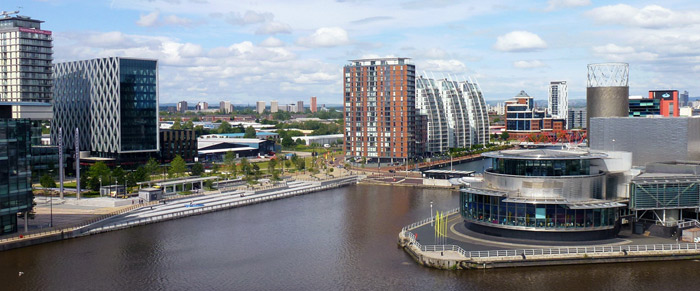Property investment and buy-to-let is an attractive idea for lots of us, but it’s important to know exactly what you’re getting into.
At The Landlord Link we’re experts on buy-to-let and everything that goes with being a landlord. Here are our top tips for your first buy-to-let.
Advice for new buy-to-let landlords
If you’re a new buy-to-let landlord, or thinking of taking the first steps into property invesment, these are the things you must consider.
1. Understand your finances
Keep in mind whether you are in the market for capital gain when you sell or simply monthly rental income. This will help you decide what to buy, where to buy and what kind of mortgage you need.
2. Buy carefully
Make sure you buy a property which allows for sufficient profit margin. Do not go for a ‘bargain’ property which may turn into a money pit very quickly. Major repairs require much time and effort, so paying more for a property which is in better condition can be a wise move.
3. Do the maths
You will need to budget carefully, check the cost of the property and the rent you are likely to receive by speaking to local agents. Most Buy-to-Let lenders will want rent to cover 125% of the monthly mortgage repayment. You will need a deposit of at least 25% to secure a reasonable deal. Don’t forget to factor in any future rate rises and an emergency fund that will cover you for void periods (when tenants are not living in the property). Try to be realistic, what would happen if the property is empty for a couple of months or interest rates rise?
4. Location
This is still one of the most important factors when deciding where to buy property. Do some research, check the neighbourhood and make sure that you find a property that will appeal to tenants. Good transport links are useful, as are the availability of good schools and local shops.
Towns that have major companies, hospitals and universities will always be popular with investors as there will be plentiful demand for rental property from office workers, nurses and students. A good location will increase your chances of getting a tenant sooner.
5. Step out of your comfort zone
It may be tempting to choose a location you know well but is it the ideal neighbourhood to invest in? Cast your net further, there may be up and coming areas showing greater promise, such as a university town or suburb with an excellent school catchment that would appeal to families. Take a look at our article on the best areas for buy-to-let in 2020 for some ideas.
A great place to look for buy-to-let properties for sale is on The Landlord Link’s own rental property listings. In many cases these properties are already tenanted, sometimes with extremely reliable tenants that have lived in the property for several years.
If you’re looking for the easiest-possible way to get into buy-to-let then buying an already-tenanted property is a great way to start.
6. Consider your ideal tenant
Establish the type of tenant you want to attract and then furnish it to appeal to them. For example, students are likely to want an unpretentious, clean and comfortable property while a young professional may prefer a stylish, blank canvas they can make their own mark on.
7. Negotiate on price
As a Buy-to-Let investor you are in a strong position to negotiate a discount on the selling price, as you are not part of a chain and there is less risk of a sale falling through which means a great deal to a person selling their property.
8. Prepare for voids
Your property may be empty and not generate any income for periods of time, so you need to be ready for this. Advertising for new tenants, painting walls and replacing carpets can take months off your lettings calendar and you should have a plan in place for when this happens.
9. Check for safety
By law you must make sure that the property you are letting complies with various safety regulations, like furniture and furnishings fire safety, gas safety, electrical equipment safety and that it contains a smoke detector. You’ll also need certificates to prove these regulations have been met. Be aware of new and updated regulations as and when they arise. Failure to comply with the law can result in serious consequences.
10. Know your responsibilities
As a landlord you will be expected to pay buildings insurance, ground rent, service charges and insure any items you leave in the property.
11. Refurbishment
Don’t make the mistake of decorating and furnishing the property to your own tastes – keep it simple and neutral with clean lines. Magnolia for walls and white for kitchens and bathrooms. You are there to make money out of the property, so keep your market firmly in mind.
12. Produce a detailed inventory
This is especially important should you decide to furnish your property. The inventory is your only proof of how the property was provided for at the outset and should accurately describe in fine detail everything in it.
13. Recruit a managing or letting agent
Choosing between a DIY approach to property management and a management company is an important decision. ou will need to consider how involved you want to be. Being a landlord is like running a small business, you may want to be 100% hands-on or if time is precious, you may decide to employ the services of an agent.
A good agent will source tenants, draw up leases, collect rent, inspect the property and undertake credit checks to ensure there is less chance anyone will default on their rental payments.
Agents will charge a management fee, usually between 10-15% of the gross rental income, however this might be money well spent for the peace of mind of knowing that someone is taking care of your property 24/7.
14. Landlord’s insurance
As a landlord you are responsible for ensuring you have building and contents insurance. Leaseholders letting out their flats will need to inform their management company that the property is let. They will then ensure the buildings insurer is also advised.
15. Taxes
Be aware that your rental income will be subject to income tax and any profit you make when you sell your Buy-to-Let property will be liable to Capital Gains Tax that HMRC will charge.













